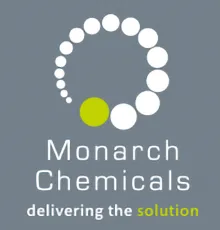Sulfate removal by precipitation: all you need to know

The removal of sulphate (known in the US as sulfate) by precipitation is a widely used method in water and wastewater treatment to reduce sulphate concentrations in industrial effluents and natural water sources.
The removal of sulphate (known in the US as sulfate) by precipitation is a widely used method in water and wastewater treatment to reduce sulphate concentrations in industrial effluents and natural water sources.
Why must sulphate be removed?
High sulphate levels in water can lead to several issues, such as scaling in pipes, corrosion, and negative impacts on aquatic life and human health.
Removing sulphate by precipitation
The precipitation process involves the addition of specific chemicals that react with dissolved sulphate to form an insoluble compound, which can then be separated from the water.
Precipitation chemistry:
The most common method for sulphate removal involves the addition of a metal salt, typically calcium or barium, to the water.
When a calcium salt like calcium chloride is added, it reacts with the sulphate ions present in the water to form calcium sulphate, which is less soluble in water. Another common form of calcium that is used to remove sulphate is addition of calcium hydroxide or calcium aluminate.
Similarly, when barium chloride is used, it reacts with sulphate to form barium sulphate, which is even less soluble than calcium sulphate.
Barium sulphate’s low solubility makes it an effective method for removing even trace amounts of sulphate from water. Although it is not a preferred method due to its cost and toxicity.
Process steps:
- Chemical addition: The chemical (e.g., calcium or barium chloride) is added to the sulphate-rich water. The amount of chemical required depends on the sulphate concentration and the desired level of removal.
- Mixing and reaction: After the chemical is added, the water is thoroughly mixed to ensure that the sulphate ions react with the added calcium or barium ions. This mixing facilitates the complete precipitation of sulphate as calcium sulphate or barium sulphate.
- Precipitate formation and settling: The reaction produces a precipitate (solid particles) of calcium sulphate or barium sulphate, which is insoluble and settles to the bottom of the reaction vessel or clarifier.
- Filtration or sedimentation: The precipitate is then separated from the water by sedimentation or filtration. The clean, sulphate-reduced water is removed from the top, while the precipitated sludge is collected for further processing or disposal.
Advantages and considerations
Precipitation is an effective and relatively straightforward method for sulphate removal, especially for high sulphate concentrations.
However, it requires careful control of pH and dosage to ensure efficient precipitation and minimal chemical wastage. It can take several hours to precipitate the sulphate to low levels and require two precipitation steps.
The choice between calcium and barium for precipitation depends on the required sulphate levels and the feasibility of handling the resulting sludge.
Barium sulphate precipitation is more effective for achieving very low sulphate concentrations but is more costly and generates a hazardous waste (due to barium’s toxicity), requiring careful disposal.
Applications
Sulphate precipitation is commonly used in mining, chemical manufacturing, and power generation industries, where sulphate-rich effluents are prevalent.
By removing sulphate, this process helps protect downstream ecosystems and ensures compliance with environmental regulations.
Sulphate removal by precipitation with Aqua Advice
Sulphate/ Sulfate removal by precipitation is a reliable and established method, essential for managing sulphate contamination in various water treatment scenarios. The method involves the use of liquid reagents combining calcium and aluminium precipitation of the sulphate with use of ultrasound to ensure a rapid reaction with one precipitation step.
To discuss using it in your treatment plant process, get in touch today.
Topics

Let's talk...
Contact Aqua Advice today to arrange a free consultation and discover how we can help you find the perfect industrial wastewater solutions for your business.
CLIENTS INCLUDE












